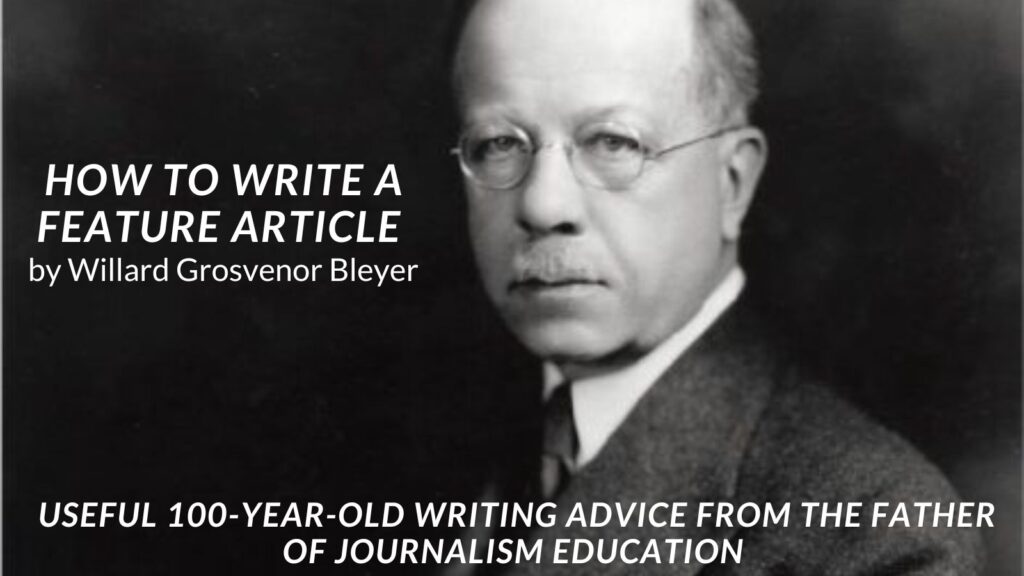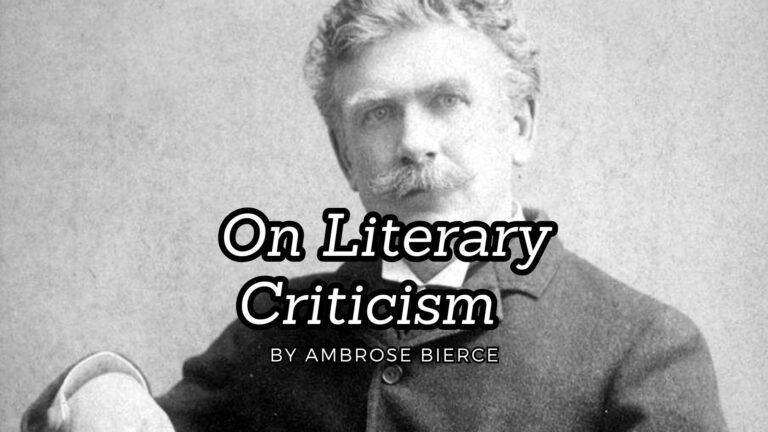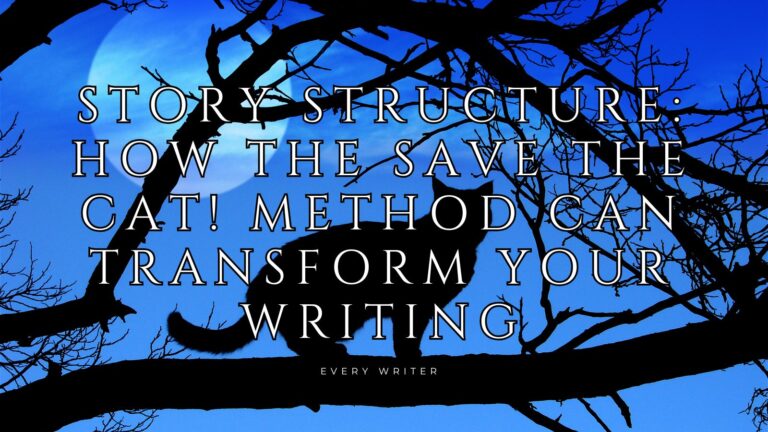Useful 100-Year-Old Writing Advice from the Father of Journalism Education
Hello, word lovers. I’m absolutely delighted you’ve dropped by to explore Bleyer’s treasure trove of timeless writing wisdom. This time we’re diving into century-old advice that feels surprisingly fresh and relevant for today’s digital creators!
Yes, I know algorithms and engagement metrics seem to rule everything these days. But isn’t it wonderfully refreshing to discover that the fundamentals of good writing have barely changed in over 100 years? It’s like finding a vintage writing manual that still works perfectly!
Willard Grosvenor Bleyer might not be on your literary radar (yet!), but his impact on American journalism is nothing short of remarkable. As the founder of the School of Journalism at the University of Wisconsin in 1912 (journalism history nerds unite!), he helped establish this craft as a legitimate academic discipline and shaped how generations of journalists learned their trade.
The most fascinating part? Bleyer’s guidance on crafting feature articles—written when typewriters were cutting-edge technology—contains wisdom that feels tailor-made for today’s writers, bloggers, and content creators. It’s like he somehow knew we’d need his advice in our digital age!
That’s why we’ve created this practical breakdown of Bleyer’s original article, “How to Write a Feature Article,” showing exactly how his methodical approach translates to modern digital writing. You’ll find concrete examples of his principles at work in today’s most successful content, and we’ve even included a free worksheet to help you apply Bleyer’s planning process to your own projects.
As you explore his guidance, you’ll likely have that wonderful “aha!” moment: while our publishing platforms and audience habits have transformed dramatically, the principles that make writing clear, compelling, and effective remain beautifully constant.
Good writing, dear friends, is truly timeless!
How to Write a Feature Article
by Willard Grosvenor Bleyer
Value of a Plan. Just as a builder would hesitate to erect a house without a carefully worked-out plan, so a writer should be loath to begin an article before he has outlined it fully. In planning a building, an architect considers how large a house his client desires, how many rooms he must provide, how the space available may best be apportioned among the rooms, and what relation the rooms are to bear to one another. In outlining an article, likewise, a writer needs to determine how long it must be, what material it should include, how much space should be devoted to each part, and how the parts should be arranged. Time spent in thus planning an article is time well spent.
Outlining the subject fully involves thinking out the article from beginning to end. The value of each item of the material gathered must be carefully weighed; its relation to the whole subject and to every part must be considered. The arrangement of the parts is of even greater importance, because much of the effectiveness of the presentation will depend upon a logical development of the thought. In the last analysis, good writing means clear thinking, and at no stage in the preparation of an article is clear thinking more necessary than in the planning of it.
Amateurs sometimes insist that it is easier to write without an outline than with one. It undoubtedly does take less time to dash off a special feature story than it does to think out all of the details and then write it. In nine cases out of ten, however, when a writer attempts to work out an article as he goes along, trusting that his ideas will arrange themselves, the result is far from a clear, logical, well-organized presentation of his subject. The common disinclination to make an outline is usually based on the difficulty that most persons experience in deliberately thinking about a subject in all its various aspects, and in getting down in logical order the results of such thought. Unwillingness to outline a subject generally means unwillingness to think.
The Length of an Article. The length of an article is determined by two considerations: the scope of the subject, and the policy of the publication for which it is intended. A large subject cannot be adequately treated in a brief space, nor can an important theme be disposed of satisfactorily in a few hundred words. The length of an article, in general, should be proportionate to the size and the importance of the subject.
The deciding factor, however, in fixing the length of an article is the policy of the periodical for which it is designed. One popular publication may print articles from 4000 to 6000 words, while another fixes the limit at 1000 words. It would be quite as bad judgment to prepare a 1000-word article for the former, as it would be to send one of 5000 words to the latter. Periodicals also fix certain limits for articles to be printed in particular departments. One monthly magazine, for instance, has a department of personality sketches which range from 800 to 1200 words in length, while the other articles in this periodical contain from 2000 to 4000 words.
The practice of printing a column or two of reading matter on most of the advertising pages influences the length of articles in many magazines. To obtain an attractive make-up, the editors allow only a page or two of each special article, short story, or serial to appear in the first part of the magazine, relegating the remainder to the advertising pages. Articles must, therefore, be long enough to fill a page or two in the first part of the periodical and several columns on the pages of advertising. Some magazines use short articles, or “fillers,” to furnish the necessary reading matter on these advertising pages.
Newspapers of the usual size, with from 1000 to 1200 words in a column, have greater flexibility than magazines in the matter of make-up, and can, therefore, use special feature stories of various lengths. The arrangement of advertisements, even in the magazine sections, does not affect the length of articles. The only way to determine exactly the requirements of different newspapers and magazines is to count the words in typical articles in various departments.
Selection and Proportion. After deciding on the length of his article, the writer should consider what main points he will be able to develop in the allotted space. His choice will be guided by his purpose in writing the article. “Is this point essential to the accomplishment of my aim?” is the test he should apply. Whatever is non-essential must be abandoned, no matter how attractive it may be. Having determined upon the essential topics, he next proceeds to estimate their relative value for the development of his theme, so that he may give to each one the space and the prominence that are proportionate to its importance.
Arrangement of Material. The order in which to present the main topics requires thoughtful study. A logical development of a subject by which the reader is led, step by step, from the first sentence to the last in the easiest and most natural way, is the ideal arrangement. An article should march right along from beginning to end, without digressing or marking time. The straight line, in writing as in drawing, is the shortest distance between two points.
In narration the natural order is chronological. To arouse immediate interest, however, a writer may at times deviate from this order by beginning with a striking incident and then going back to relate the events that led up to it. This method of beginning in medias res is a device well recognized in fiction. In exposition the normal order is to proceed from the known to the unknown, to dovetail the new facts into those already familiar to the reader.
When a writer desires by his article to create certain convictions in the minds of his readers, he should consider the arrangement best calculated to lead them to form such conclusions. The most telling effects are produced, not by stating his own conclusions as strongly as possible, but rather by skillfully inducing his readers to reach those conclusions by what they regard as their own mental processes. That is, if readers think that the convictions which they have reached are their own, and were not forced upon them, their interest in these ideas is likely to be much deeper and more lasting. It is best, therefore, to understate conclusions or to omit them entirely. In all such cases the writer’s aim in arranging his material should be to direct his readers’ train of thought so that, after they have finished the last sentence, they will inevitably form the desired conclusion.
With the main topics arranged in the best possible order, the writer selects from his available material such details as he needs to amplify each point. Examples, incidents, statistics, and other particulars he jots down under each of the chief heads. The arrangement of these details, in relation both to the central purpose and to each other, requires some consideration, for each detail must have its logical place in the series. Having thus ordered his material according to a systematic plan, he has before him a good working outline to guide him in writing.
Planning a Typical Article. The process of gathering, evaluating, and organizing material may best be shown by a concrete example. The publication in a New York paper of a news story to the effect that the first commencement exercises were about to be held in the only factory school ever conducted in the city, suggested to a special feature writer the possibility of preparing an article on the work of the school. To obtain the necessary material, he decided to attend the exercises and to interview both the principal of the school and the head of the factory. In thinking over the subject beforehand, he jotted down these points upon which to secure data: (1) the origin and the purpose of the school; (2) its relation to the work of the factory; (3) the methods of instruction; (4) the kind of pupils and the results accomplished for them; (5) the cost of the school; (6) its relation to the public school system. At the close of the graduation exercises, he secured the desired interviews with the teacher in charge and with the head of the firm, copied typical examples from the exhibition of the pupils’ written work, and jotted down notes on the decoration and furnishing of the schoolroom. Since the commencement exercises had been reported in the newspapers, he decided to refer to them only incidentally in his story.
After considering the significance of the work of the school and what there was about it that would appeal to different classes of readers, he decided to write his story for the magazine section of the New York newspaper that he believed was most generally read by business men who operated factories similar to the one described. His purpose he formulated thus: “I intend to show how illiterate immigrant girls can be transformed quickly into intelligent, efficient American citizens by means of instruction in a factory school; this I wish to do by explaining what has been accomplished in this direction by one New York factory.” He hoped that his article would lead readers to encourage the establishment of similar schools as a means of Americanizing alien girls. The expository type of article containing concrete examples, description, and interviews he concluded to adopt as the form best suited to his subject.
The average length of the special feature stories, in the magazine section of the paper to which he intended to submit the article, proved to be about 2000 words. In order to accomplish his purpose in an article of this length, he selected five main topics to develop: (1) the reasons that led the firm to establish the school; (2) the results obtained; (3) the methods of instruction; (4) the cost of the school; (5) the schoolroom and its equipment.
“What part of my material will make the strongest appeal to the readers of this newspaper?” was the question he asked himself, in order to select the best point with which to begin his article. The feature that would attract the most attention, he believed, was the striking results obtained by the school in a comparatively short time.
In reviewing the several types of beginnings to determine which would best suit the presentation of these remarkable results, he found two possibilities: first, the summary lead with a striking statement for the first sentence; and second, a concrete example of the results as shown by one of the pupils. He found, however, that he did not have sufficient data concerning any one girl to enable him to tell the story of her transformation as an effective concrete case. He determined, therefore, to use a striking statement as the feature of a summary lead.
From his interview with the head of the firm, and from a formal statement of the purpose of the school printed on the commencement program, he obtained the reasons why the school had been established. These he decided to give verbatim in direct quotation form.
To show most interestingly the results of the teaching, he picked out four of the six written exercises that he had copied from those exhibited on the walls of the schoolroom. The first of these dealt with American history, the second with thrift and business methods, and the third with personal hygiene. For the fourth he selected the work of a woman of forty whose struggles to get into the school and to learn to write the teacher had described to him.
Figures on the cost of the school he had secured from the head of the firm according to his preliminary plan. These covered the expense both to the employers and to the city.
His description of the schoolroom he could base on his own observation, supplemented by the teacher’s explanations.
For his conclusion he determined to summarize the results of this experiment in education as the firm stated them on the commencement program, and to give his own impression of the success of the school. Thus he sought to give final reinforcement to the favorable impression of the school that he wished his article to create, with the aim of leading readers to reach the conclusion that such schools should be encouraged as invaluable aids to the Americanization of alien girls.
Outlining the Article. Having selected the main topics and having decided in a general way how he intended to develop each one, he then fixed upon the best order in which to present them.
After his introduction giving the striking results of the school in a summary lead, it seemed logical to explain the firm’s purpose in undertaking this unusual enterprise. He accordingly jotted down for his second topic, “Purpose in establishing the school,” with the two sub-topics, “Firm’s statement on program” and “Head of firm’s statement in interview.”
The methods of-instruction by which the remarkable success was attained, impressed him as the next important point. His readers, having learned the results and the purpose of the school, would naturally want to know by what methods these girls had been transformed in so short a time. As his third topic, therefore, he put down, “Methods of instruction.”
For his fourth division he had to choose between (1) the results as shown by the pupils’ written work, (2) the cost of the school, and (3) the schoolroom and its equipment. From the point of view of logical order either the results or the schoolroom might have been taken up next, but, as all the explanations of the methods of instruction were quoted directly in the words of the teacher, and as the pupils’ exercises were to be given verbatim, he thought it best to place his own description of the schoolroom between these two quoted parts. Greater variety, he foresaw, would result from such an arrangement. “The schoolroom,” then, became the fourth topic.
Since the pupils’ work which he planned to reproduce had been exhibited on the walls of the schoolroom, the transition from the description of the room to the exhibits on the walls was an easy and logical one.
By this process of elimination, the cost of the school became the sixth division, to be followed by the summary conclusion.
He then proceeded to fill in the details needed to develop each of these main topics, always keeping his general purpose in mind. The result of this organization of material was the following outline:
I. Summary lead
1. Striking results—time required
2. Commencement—when and where held
3. Graduates—number, nationality, certificates
4. School—when and where established
5. Example to other firms
II. Purpose of school
1. Firm’s statement on commencement program
2. Head of firm’s statement in interview
III. Methods of instruction
1. Practical education
2. Letter writing—geography, postal regulations, correspondence
3. Arithmetic—money, expense accounts, reports of work
4. Civics—history, biography, holidays, citizenship, patriotism
5. Personal hygiene—cleanliness, physical culture, first aid, food
6. Cotton goods—growing cotton, spinning, shipping
7. Means of communication—telephone, directory, map of city, routes of travel, telephone book
8. Study outside of classroom
IV. The schoolroom
1. Location—floor space, windows
2. Decorations—flowers, motto, photograph of Miss Jessie Wilson
3. Furnishings—piano, phonograph
4. Library—reading to the girls, The Promised Land, Mary Antin, library cards
V. Results shown by pupils’ work
1. Italian’s theme and her remarkable progress
2. Russian’s essay on saving
3. Polish girl’s exercise about picture
4. Woman of forty and her work
VI. Cost of school
1. Expense to firm
2. Cost to Board of Education—salaries and supplies
3. Entire cost per pupil
4. Returns to firm outweigh cost, says employer
VII. Summary conclusion
1. Results quoted from program
2. Impression made by girls receiving diplomas
The Completed Article. Since the establishment of a school in a factory was the novel feature of the enterprise, he worked out a title based on this idea, with a sub-title presenting the striking results accomplished by the school. The completed article follows, with a brief analysis of the methods used in developing the outline.
Modern Applications of Bleyer’s Principles
Hello, savvy content creators! Ready for something truly fascinating? While Bleyer was typing away in a world of printed newspapers and typewriters (can you imagine?), his wisdom feels like it was custom-made for our digital playground! Let’s explore how his brilliant advice translates to our modern writing landscape:
1. The Value of Planning and Outlining
Original principle: “Time spent in thus planning an article is time well spent.”
Modern application: In today’s content-hungry digital world, there’s this constant pressure to publish quickly and frequently—we’ve all felt it! But guess what? The most successful digital creators still swear by good old-fashioned planning. Those YouTube stars you love? They’re secretly scripting and storyboarding before hitting record. And those bloggers with massive followings? They’re mapping out content calendars and detailed outlines behind the scenes.
Digital example: Take a peek at Backlinko’s Brian Dean, whose in-depth guides consistently dominate Google’s search results. Dean has openly shared that he spends more time researching and outlining than actually writing—following Bleyer’s century-old advice to a T!
2. Length Based on Subject and Publication
Original principle: “The length of an article is determined by two considerations: the scope of the subject, and the policy of the publication for which it is intended.”
Modern application: While many platforms seem obsessed with brevity (hello, Twitter!), the “right” length still depends entirely on purpose and platform. Isn’t it interesting that data shows in-depth, comprehensive content often performs better in search rankings, while social media demands we keep things snappy?
Digital example: The New York Times’ gorgeous “Snowfall” interactive features sprawl to thousands of words because the subject deserves that space, while their Instagram posts communicate in just a sentence or two. Both work beautifully because they match content length to medium and purpose—exactly as Bleyer suggested all those years ago!
3. Selection and Proportion
Original principle: “Having determined upon the essential topics, he next proceeds to estimate their relative value for the development of his theme, so that he may give to each one the space and the prominence that are proportionate to its importance.”
Modern application: With our shrinking attention spans (we’re all guilty!) and fierce competition for readers, those strategic decisions about what to include and how much space to give each element are more critical than ever.
Digital example: That “inverted pyramid” structure used by Reuters and AP puts the juiciest information right at the top, with decreasing importance as the article continues—letting readers grab key points quickly while providing delicious depth for those who stay for the full meal.
4. Logical Arrangement of Material
Original principle: “A logical development of a subject by which the reader is led, step by step, from the first sentence to the last in the easiest and most natural way, is the ideal arrangement.”
Modern application: Even though our digital content loves to play with non-linear elements like hyperlinks and interactive features, the need for a logical flow remains absolutely crucial—perhaps even more so when our readers are just one notification away from distraction!
Digital example: Those friendly “What You’ll Learn” sections at the beginning of Medium articles create a perfect roadmap that helps readers navigate complex material, fulfilling Bleyer’s ideal of leading readers “step by step” through the content.
5. Starting with a Compelling Hook
Original principle: “What part of my material will make the strongest appeal to the readers of this newspaper?”
Modern application: With countless headlines competing for precious attention, leading with your strongest element isn’t just good advice—it’s survival in the digital jungle! The modern equivalent of Bleyer’s “summary lead with a striking statement” is today’s irresistible headline and opening paragraph.
Digital example: The meteoric rise of sites like Upworthy and BuzzFeed was built on mastering the art of the can’t-look-away headline, drawing readers in by leading with the most emotionally compelling aspects of a story.
And the pattern continues through all ten principles! Isn’t it remarkable how timeless good writing advice truly is? Whether you’re crafting tweets or longform essays, Bleyer’s century-old wisdom continues to light the way for modern digital storytellers just like you!
6. Purpose-Driven Writing
Original principle: Bleyer advises writers to formulate their purpose clearly: “I intend to show how…”
Modern application: Today’s savvy content marketers call this “goal-oriented content”—writing with that crystal-clear understanding of what action or conclusion you want from your reader. Isn’t it amazing how strategic this approach feels even in our digital age?
Digital example: Look at how HubSpot crafts their blog posts—they’re not just informative (though they certainly are that!)—they’re strategically designed to lead readers toward specific solutions that align perfectly with their products. Each article has a clear purpose that guides every content decision throughout. Bleyer would definitely approve!
7. Leading Readers to Conclusions
Original principle: “The most telling effects are produced, not by stating his own conclusions as strongly as possible, but rather by skillfully inducing his readers to reach those conclusions by what they regard as their own mental processes.”
Modern application: This psychological insight remains incredibly powerful in the age of social media, where people are increasingly (and understandably!) skeptical of being told what to think. We all love feeling like we’ve figured something out ourselves, don’t we?
Digital example: Modern data journalism outlets like FiveThirtyEight present information visually and lead readers through the analytical process rather than simply stating conclusions—allowing readers to experience that wonderful “aha!” moment of discovery. It’s the difference between saying “Trust me on this” and “Look what I found—what do you think?”
8. Research Methods
Original principle: Bleyer emphasized interviews, observation, and gathering data firsthand.
Modern application: While digital tools have absolutely expanded our research possibilities (hello, Google!), original research and firsthand reporting still distinguish premium content from all that recycled information flooding our feeds. The internet has made research easier, but that just raises the bar for truly original content!
Digital example: The most shared content on social platforms often contains original research, surveys, or expert interviews—just look at Content Marketing Institute’s annual reports or OkCupid’s once-popular data blog. These standouts aren’t just rehashing what everyone else says—they’re creating fresh insights that readers can’t find anywhere else.
9. Using Concrete Examples
Original principle: Bleyer recommended using specific examples over abstract statements.
Modern application: In today’s culture of TL;DR (too long; didn’t read), concrete examples and vivid case studies make content more engaging and memorable. After all, our brains are wired for stories, not statistics! When everything is competing for attention, specificity wins every time.
Digital example: Sites like Wirecutter don’t just describe product features in abstract terms—they share specific testing scenarios and real-world examples that make their reviews come alive. “This coffee maker produced the smoothest brew in our test kitchen” is infinitely more compelling than “This coffee maker performs well,” isn’t it?
10. Thoughtful Conclusions
Original principle: End with a summary that reinforces the main point and leaves readers with a clear impression.
Modern application: Effective digital content still needs those strong conclusions, often with the addition of a clear call-to-action that wasn’t quite as explicit in Bleyer’s era. Today’s savvy writers know that the conclusion isn’t just an ending—it’s a launching pad for what comes next!
Digital example: Ramit Sethi’s blog posts typically end with both a concise summary of key takeaways and a specific next step for readers—combining Bleyer’s summary conclusion with modern conversion optimization. It’s like he’s saying, “Here’s what you learned, and here’s exactly what to do with it right now.”
Isn’t it remarkable how Bleyer’s advice feels so fresh and relevant despite being written when radio was cutting-edge technology? It just goes to show that while our tools and platforms may evolve at lightning speed, the principles of connecting with readers remain wonderfully constant. Whether you’re writing a tweet thread or a longform article, these timeless fundamentals are your secret weapons for standing out in today’s noisy digital landscape!
So, tell me—which of these principles do you find most helpful in your own writing journey? I’d love to know which ones resonate most with your creative process!
–Feature Article Planning Worksheet_ Applying Bleyer’s Timeless Principles–
About the Author
Willard Grosvenor Bleyer (1873-1935) was a pioneering figure in American journalism education who helped establish journalism as a legitimate academic discipline in the United States.
Born in Wisconsin, Bleyer earned his Ph.D. in English from the University of Wisconsin in 1904. His career took a pivotal turn in 1905 when he established the first journalism course at the University of Wisconsin. This initial course evolved into a department in 1908, and eventually, in 1912, Bleyer founded the School of Journalism at the University of Wisconsin—one of the first formal journalism schools in America.
As the school’s director for many years, Bleyer championed an educational approach that combined practical journalism skills with a strong foundation in liberal arts and ethics. He believed journalists should be broadly educated citizens capable of thoughtful, responsible reporting rather than merely trained in technical skills.
Bleyer authored several influential textbooks that shaped journalism education across the country, including “Newspaper Writing and Editing” (1913), “Types of News Writing” (1916), and “Main Currents in the History of American Journalism” (1927). These texts were used in journalism programs throughout the United States for decades.
His impact on the field extended beyond the classroom. Bleyer helped found the Association of American Schools and Departments of Journalism (a precursor to today’s Association for Education in Journalism and Mass Communication) and served as its first president. He also advocated for high ethical standards in both journalism practice and education.
Bleyer’s methodical approach to teaching writing, as demonstrated in “How to Write a Feature Article,” reflects his belief that good journalism requires careful planning, clear thinking, and purposeful construction. His principles have influenced generations of journalists and continue to provide valuable guidance for writers across all media platforms.
Though he passed away in 1935, Bleyer’s legacy lives on in journalism schools across America and in the timeless writing advice that continues to serve writers well into the digital age.
- Story Structure: How the Save the Cat! Method Can Transform Your Writing - April 23, 2025
- HALFWAY TO HALLOWEEN: 50 Words of Horror Contest - April 22, 2025
- How to Edit your poetry for beginners and beyond (with worksheet) - April 18, 2025







